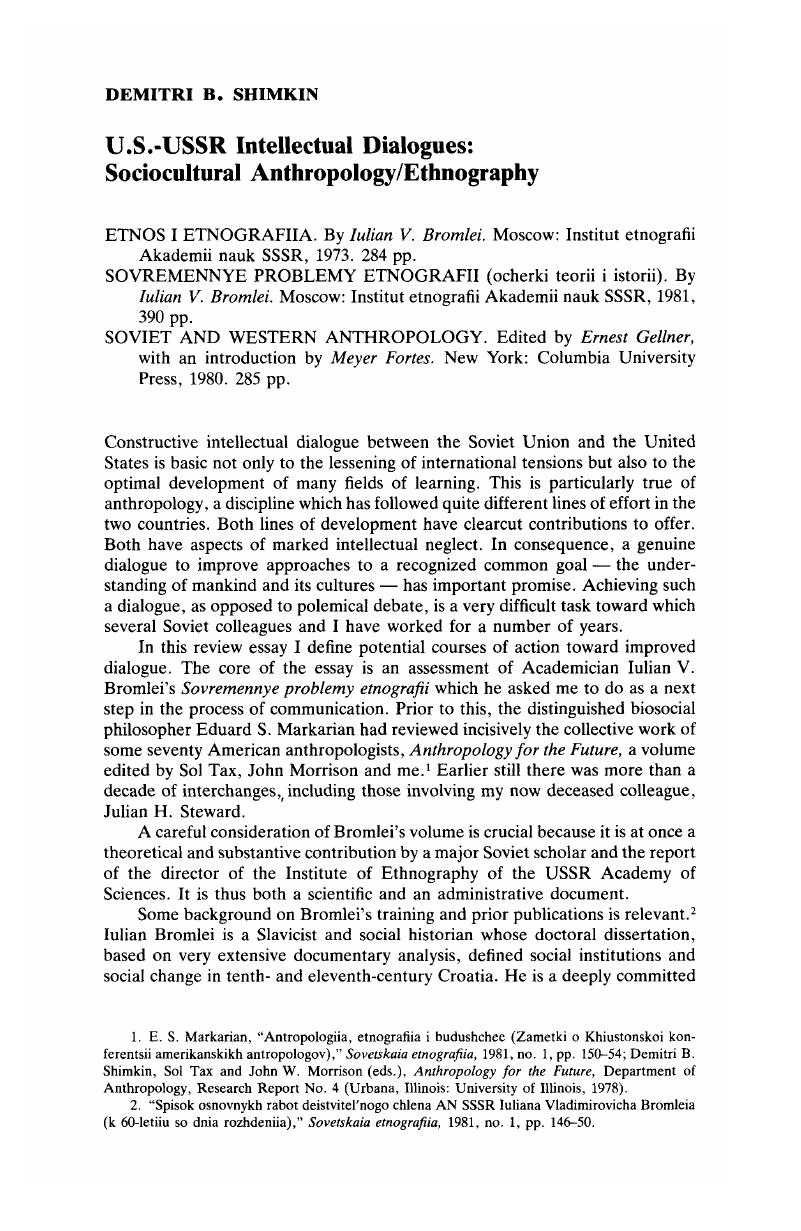No CrossRef data available.
Published online by Cambridge University Press: 27 January 2017

1. E. S., Markarian, “Antropologiia, etnografiia i budushchee (Zametki o Khiustonskoi konferentsii amerikanskikh antropologov)” Sovetskaia etnografiia, 1981, no. 1, pp. 150–54Google Scholar; Shimkin, Demitri B., Tax, Sol and Morrison, John W. (eds.), Anthropology for the Future, Department of Anthropology, Research Report No. 4 (Urbana, Illinois: University of Illinois, 1978)Google Scholar.
2. “Spisok osnovnykh rabot deistvitel'nogo chlena AN SSSR Iuliana Vladimirovicha Bromleia (k 60-letiiu so dnia rozhdeniia),” Sovetskaia etnografiia, 1981, no. 1, pp. 146-50.
3. Moscow, 1972.
4. Bromlei, Iu. V. (ed.), Etnologicheskie issledovaniia za rubezhom. Kriticheskie ocherki. Sbornik (Moscow, 1973)Google Scholar; Bromlei, Iu. V. (ed.), Etnografiia v stranakh sotsializma. Ocherki razvitiia nauki. AN SSSR. Institut etnografii im. N. N. Miklukho-Maklaia (Moscow, 1975)Google Scholar.
5. Bromlei, 1981, pp. 10-45.
6. An “ethnosocial organism” is a simple society, generally tribal, in which ethnic and socialstructural boundaries coincide.
7. Bromlei, 1973, p. 64. 8. Ibid., p. 264. 9. Bromlei, 1981, pp. 21-22. 10. Ibid., p. 109. 11. Ibid., p. 299. 12. Ibid., p. 119. 13. Ibid., pp. 135-36. 14. Ibid., p. 61.